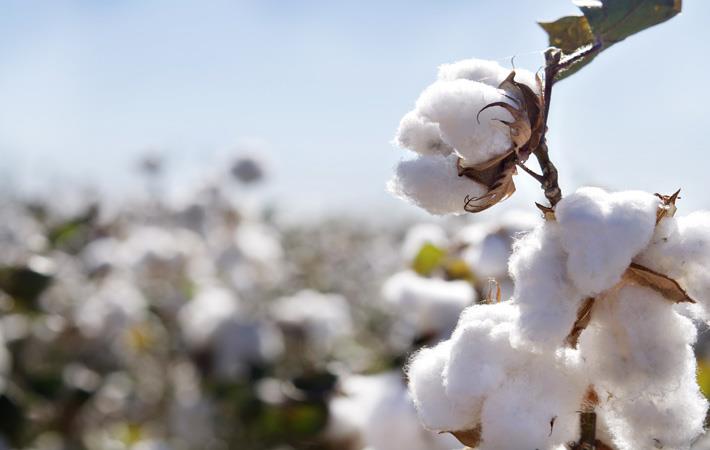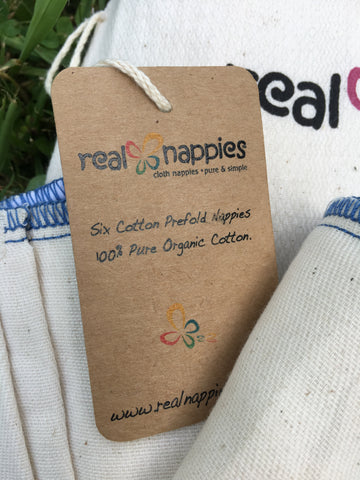Here at Real Nappies we love cotton. All our prefolds are made with the best cotton we can source. Cotton is a fantastic fabric due to its breathability, skin friendliness, quick drying and has much less processing than many other fabric options. However, recently there have been a lot of nappies on the market spouting the advantages of bamboo and microfibres. So, we thought we would take a deeper look into these fabrics and see what’s really going on.
Bamboo
Bamboo fabric is claimed to be a natural fibre, and while this is true in its virgin state, during its processing to be made into fabric it undergoes extensive chemical processing that according to Americas Federal Trade Commission (FTC) gives off hazardous air pollution. Some of these chemicals include carbon disulphide, sulfuric acid, ammonia, acetone and caustic soda. Bamboo requires 19 steps (nineteen!!!) of processing instead of the 7 steps it takes for cotton. The end result of processing bamboo cellulose fibres is called Rayon or Viscose, which unfortunately retains no trace of original bamboo plant in the finished product. There is currently an ongoing debate about whether rayon/viscose is a synthetic micro-fibre that should be considered plastic.
False and misleading claims of fabric being called/labelled Bamboo has become such an issue that the FTC have taken action in the United States on labelling so that manufacturers can no long call something Bamboo unless made directly from bamboo fibre. Instead textiles made from rayon or viscose created using bamboo may be labelled and advertised as “rayon (or viscose) made from bamboo”. Only products made directly with bamboo fibre — often called “mechanically processed bamboo” can be called/labelled bamboo which feels like scratchy linen. Unfortunately no such labelling requirements exist in New Zealand or Australia. So, if your bamboo nappies feel soft and silky, you can bet your bottom dollar they are rayon or viscose.

Cotton
Cotton has been grown and produced into fabric for thousands of years and is one of the oldest known fabrics. The way it is processed to be made into fabric is very different to how bamboo is produced. Instead of chemicals it is mainly a mechanical series of processing that it goes through with some bleaching towards the end (to turn it white). The biggest issue with cotton is the pesticides and fertilisers used while it is growing. This is where organic cotton is the safest solution for the land, growers, consumers and environment. In an ideal world everything would be organic!
At Real Nappies we are very proud to offer organic cotton prefolds/inserts and all of our cotton is certified to the highest Oeko-Tex ecological standards. Oeko-Tex is an independent organisation that develops test methods and defines limits for the textile industry. Real Nappies carry their Standard 100 label certification, which means our cotton has been tested for harmful substances and that the article therefore is safe for human health.


Here are some other differences between cotton and bamboo:
- Bamboo/Viscose is more absorbent that cotton, however the downside of this is that this means it takes significantly longer to dry than cotton. Personally, I find the drying time does not really match the advantage of the extra absorbency.
- While most fabrics are not made for dryers, because of its manufacturing bamboo/viscose has a tendency to shrink in hot water or in the dryer. Not ideal for a product (such as nappies) that need to be washed in hot water to effectively remove faecal matter and ammonia build-up; many users of cloth nappies also put them in the dryer for faster and softer drying.
- Claims are often made that bamboo is antibacterial and antifungal. While true in its true virgin form, it is not known if after all of the heavy chemical processing if it still retains these qualities.
- Cotton can be composted or worm farmed at the end of its life. It is not known how many years it takes for bamboo/viscose to break down as some argue it is a plastic.
Some final thoughts on Micro-fibre cloth
Micro-fibre nappies and inserts are becoming more and more popular with cloth nappy companies. But are they any better?
It’s a hard NO from us!
Why? They are 100% synthetic, made from plastic! Now while micro-fibre can technically be made from recycled plastic they very rarely are and the majority are made from new plastic… pretty sure we don’t need more plastic in the world today! What’s worse is they are thought to break down into micro-plastics and shed off clothing when washed, being washed out into the waste water system and out to sea. Fish and other aquatic life end up ingesting it, which ultimately we eat when we buy our fish from the supermarket. On top of all those environmental arguments against micro-fibres, it’s not great for baby’s skin as it isn’t breathable and can wick away their natural skin moisture leaving their skin dry.

Bottom line is why use a fabric that, while once natural and pure, is so heavily processed, using a raft of chemicals that are harmful to humans, animals and the environment, and is now not biodegradable when there is much safer, healthier, biodegradable, breathable fabric? Cotton!
We believe Cotton is still the best option for fabric and especially nappies that are worn by our babies directly against their very sensitive skin, which absorbs anything put on it. For the health of our babies, the future generations, the planet, the farmers and the factory workers. And finally, cotton is better as it can be repurposed for many different uses (check out the many ways you could re-use a Real Nappies prefold) and once it is no longer being used can be composted or put into a worm farm to biodegrade back into the earth. The same cannot be said for bamboo or micro-fibre cloth nappies.

References
https://www.thekitchn.com/microfiber-cloth-eco-friendly-pros-cons-256051
https://www.ftc.gov/news-events/blogs/business-blog/2013/01/bamboo-snafu
https://www.ftc.gov/bamboo-textiles
https://shenandoahmoon.com/news-information/rayon-vs-cotton/
https://www.ftc.gov/tips-advice/business-center/guidance/how-avoid-bamboozling-your-customers
https://fashionbi.com/newspaper/the-health-risks-of-toxic-fibers-and-fabrics
https://www.biome.com.au/blog/is-bamboo-fabric-plastic/
https://www.the-sustainable-fashion-collective.com/2014/12/12/how-is-cotton-made-why-bad
https://www.oeko-tex.com/en/our-standards/standard-100-by-oeko-tex




Be the first to comment